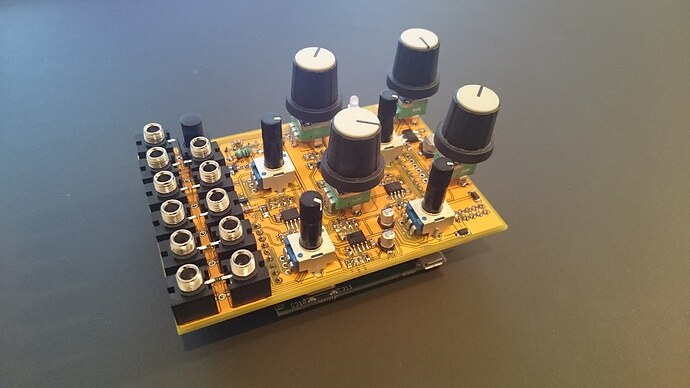Hi,
quick question re the digital i/o. chances are i’m simply missing something, but as I couldn’t find any obvious directions as to how to use them (they’re missing, for instance, in the pd template?), poking around in the code confused me even more.
specifically, as per schematic (rev-02): In_D = PB7, Out_D = PB6; now in device.h, it looks as if they’re defined the other way round?
#define SWITCH_A_PIN GPIO_Pin_6 (#L86)
#define PUSH_GATE_OUT_PIN GPIO_Pin_7 (#L132)
i assume the error is in the schematic?
thanks!
on a related note, i fail to recompile owlware.
things hang with
No rule to make target Libraries/CMSIS/DSP_Lib/Source/TransformFunctions/arm_bitreversal2.o’, needed byBuild/OwlWare.elf’. Stop.
make -d tells me it can’t find arm_bitreversal2.o first (“does not exist”), then fails to remake it.
the weird thing is it does build arm_cfft_f32.o, arm_cfft_radix8_f32.o, arm_rfft_fast_f32.o and arm_rfft_fast_init_f32.o; but it refuses to build arm_bitreversal2.o
any hints?
thanks
